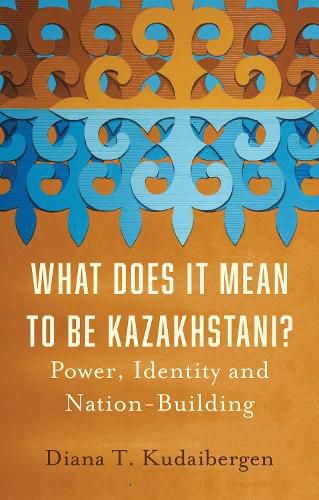Readings Newsletter
Become a Readings Member to make your shopping experience even easier.
Sign in or sign up for free!
You’re not far away from qualifying for FREE standard shipping within Australia
You’ve qualified for FREE standard shipping within Australia
The cart is loading…






In early 2022, protests rocked Kazakhstan. Initially peaceful demonstrations soon turned violent after brutal government crackdowns, leaving at least 238 dead during 'Bloody January'. But despite fears that Kazakhstan might split along ethno-linguistic lines, ethnicity played little role in the unrest: deep socio-economic problems and anti-regime grievances pushed protestors onto the streets.
More than thirty years since declaring independence, multi-ethnic Kazakhstan is still grappling with its nationhood. While secessionist movements provoked ethnic conflicts, territorial disputes and civil wars across the former USSR, Kazakhstan developed a relatively stable inter-ethnic policy, and predicted RussoKazakh tensions largely failed to materialise. Analysing the multiple narratives, actors and often contradictory feelings of national belonging in post-1991 Kazakhstan, Diana T. Kudaibergen investigates why Kazakhstani nation-building is so unusual. Has Kazakh society found a solution to divisive ethno-nationalism? How have ordinary citizens shaped their identities? And how will Moscow's 2022 invasion of Ukraine, which has led to widespread Russian immigration into Kazakhstan, impact inter-ethnic dynamics?
Kudaibergen builds on unpublished archival materials and hundreds of interviews to explore the 'hybrid' nature of nation-building in this complex country. While regime elites promote a top-down civic identity, domestic unrest and pluralistic opposition movements are once again transforming the category 'Kazakhstani'.
$9.00 standard shipping within Australia
FREE standard shipping within Australia for orders over $100.00
Express & International shipping calculated at checkout
In early 2022, protests rocked Kazakhstan. Initially peaceful demonstrations soon turned violent after brutal government crackdowns, leaving at least 238 dead during 'Bloody January'. But despite fears that Kazakhstan might split along ethno-linguistic lines, ethnicity played little role in the unrest: deep socio-economic problems and anti-regime grievances pushed protestors onto the streets.
More than thirty years since declaring independence, multi-ethnic Kazakhstan is still grappling with its nationhood. While secessionist movements provoked ethnic conflicts, territorial disputes and civil wars across the former USSR, Kazakhstan developed a relatively stable inter-ethnic policy, and predicted RussoKazakh tensions largely failed to materialise. Analysing the multiple narratives, actors and often contradictory feelings of national belonging in post-1991 Kazakhstan, Diana T. Kudaibergen investigates why Kazakhstani nation-building is so unusual. Has Kazakh society found a solution to divisive ethno-nationalism? How have ordinary citizens shaped their identities? And how will Moscow's 2022 invasion of Ukraine, which has led to widespread Russian immigration into Kazakhstan, impact inter-ethnic dynamics?
Kudaibergen builds on unpublished archival materials and hundreds of interviews to explore the 'hybrid' nature of nation-building in this complex country. While regime elites promote a top-down civic identity, domestic unrest and pluralistic opposition movements are once again transforming the category 'Kazakhstani'.